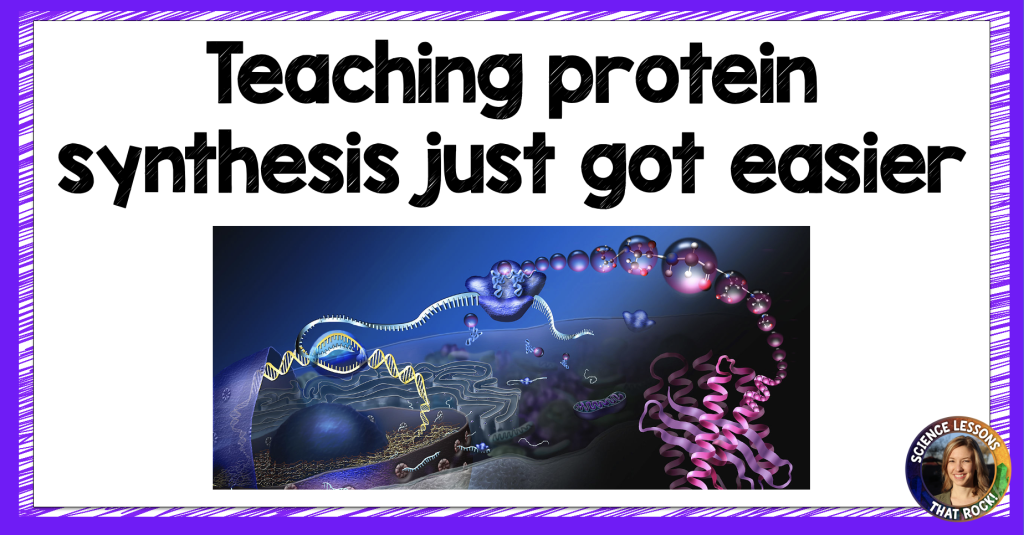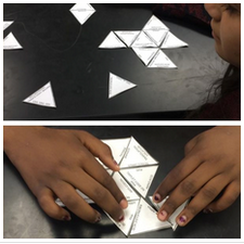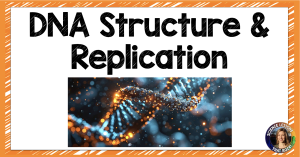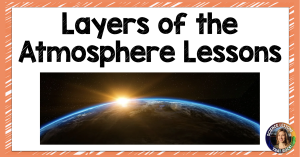
Ready to teach protein synthesis? (If you missed my DNA structure and replication blog post, back up and start there).
Protein Synthesis is actually a fun concept for me to teach. For me, there are 2 barriers you need to cross in order for students to learn protein synthesis:
1. Learning about the steps of transcription and translation (the easier part)
2. Understanding how DNA translates into gene expression (the harder part)
Most of my students do really well with step one. They can learn the A’s, T’s, C’s, G’s, and U’s and where the processes are taking place. But at the end of those lessons, if you ask your students how they have brown eyes, can they answer? It can be difficult to understand how genotypes code for phenotypes. I’ve put together a list of resources to help walk you and your students through the process.
Teaching Transcription and Translation (the easier part)
1. LESSON: Your students should already understand DNA structure and replication. Next up is a lesson on transcription and translation (I would NOT cover both topics in one class period. Split it up over 2 days). If you are interested in the powerpoints I use, you can find them on my website or on TpT.
2. INTERACTIVE: Now it’s time to practice practice practice the processes. Check out this interactive website where you can go through the process of transcription and translation up on the board with your students. This is a fun way to wrap up your lesson, or use as a reinforcement activity to follow up.

3. REVIEW GAMES: Looking for more practice activities? I like using tarsia puzzles. In this activity, students pair triangles that have matching words and definitions side by side. This lesson comes with a printable PDF version, and a digital google slide version. You can find it on my website or on TpT.
4. Do your students like bingo? Check out this codon bingo you can play so students can practice looking up codon sequences. You can find it on my website or on TpT.
5. VIDEOS: I absolutely love these videos from HHMI Biointeractive that walk students through the processes step by step in real time. You can find a transcription video here, and a translation video here.
Teaching Gene Expression (the harder part)
Alright, your students have the A’s, T’s, C’s, G’s, and U’s down. How does genotype code for phenotype?
6. USE EXAMPLES: Providing your students with many examples of how DNA –> RNA –> PROTEIN work is critical in helping them understand the complete process. Give them examples from their own body (the gene for melanin showing up as a pigment in their skin and eyes). CLICK HERE to see an example (with video) of a protein that makes fireflies glow.
7. USE ANALOGIES: Do your students understand why all your cells have the same DNA, but they all look different and do different jobs? I created this activity to help students understand how cells have certain genes turned on and certain genes turned off. In this activity the genome is likened to the blueprint of a house. Each student is given a job (plumber, electrician, roofer, or framing) and has to transcribe and translate only the genes that pertain to their jobs. It really helps students understand that cells do not use most of the genome, only genes that apply to them. You can find it on my website or on TpT.
If you are interested in a bundle where you can find a lesson, puzzles, review worksheets, close readings, quizzes and more, check out this protein synthesis bundle! It has everything you need to get through this unit.
I hope those resources help your unit go smoothly! Rock on,








